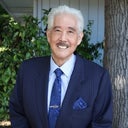Thank you for the question. There is no accurate/reliable/predictable correlation between size/profile breast implant utilized and cup size achieved. For example, I do not think that the generalizations of "200 cc equates to 1 cup" hold any validity or are helpful in any specific or practical way. In my practice, I ask patients not to communicate their goals, or evaluate the outcome of the procedure performed, based on cup size references.








